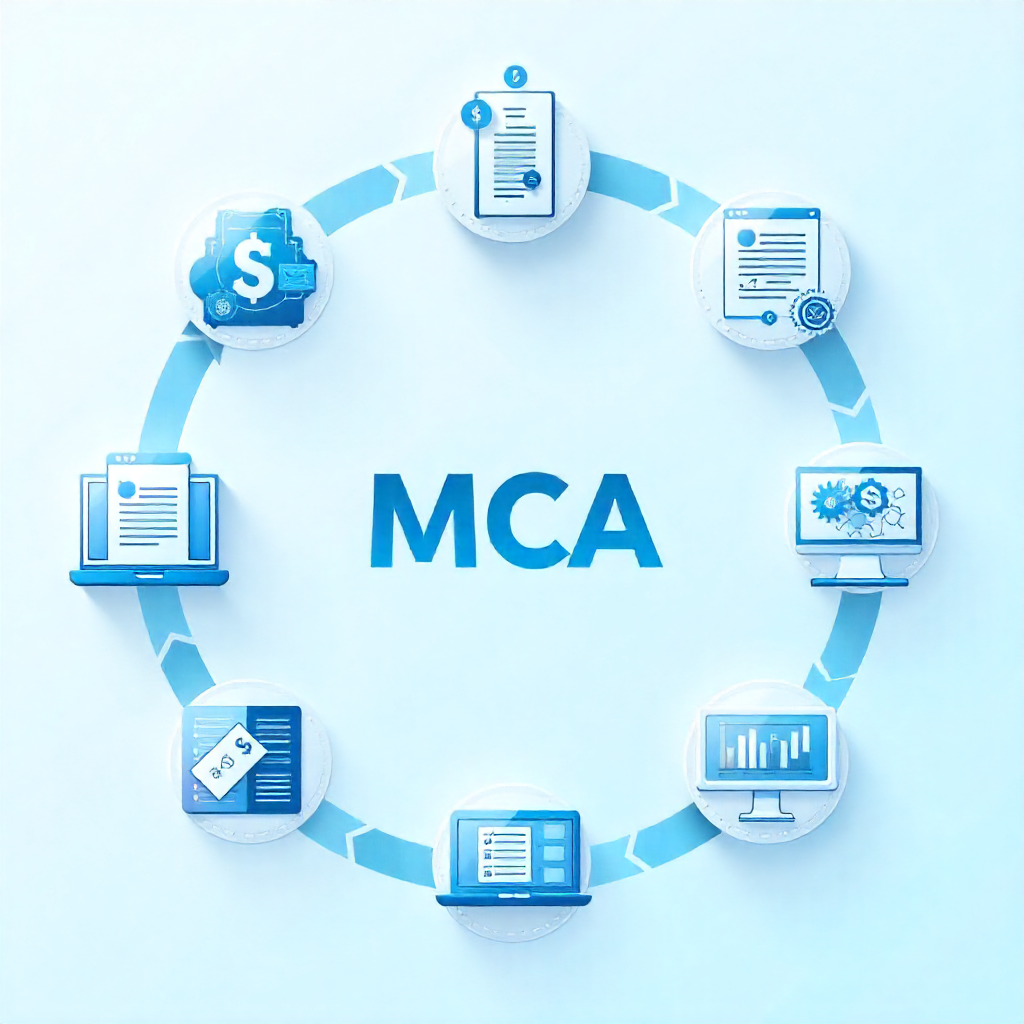The merchant cash advance lifecycle is more than just funding and repayment—it’s a structured process that begins with an application and continues through underwriting, funding, servicing, and renewal. For funders and brokers, understanding each stage is critical to reducing risk and improving efficiency. With the right MCA software, every step of this lifecycle becomes faster, more accurate, and more transparent.
1. Application & Merchant Onboarding in the MCA Lifecycle
The lifecycle begins when a business applies for an advance. Traditionally, this meant stacks of paper forms and back-and-forth emails. Today, MCA software allows merchants to submit applications digitally—often via an online portal.
Key steps at this stage include:
Verifying merchant identity and business legitimacyd or pulled automatically—reducing errors and speeding up onboarding.
Collecting business information (ownership, tax ID, revenue history)
Uploading financial documents (bank statements, POS reports)
7 Top Technology and Finance Websites for Expert Insights
2. Underwriting & Risk Assessment in the MCA Lifecycle
Once the application is submitted, the next step is underwriting. Funders analyze the merchant’s financial health to determine:
- Average monthly revenue
- Consistency of cash flow
- Existing obligations or debts
- Seasonal trends and risks
MCA software simplifies this process with automated decision engines—using preset rules or AI-driven risk models. This reduces underwriting time from days to hours, while still allowing human oversight for edge cases.
3. Offer Generation & Agreement
If the merchant is approved, the funder creates an offer outlining:
- Advance amount
- Factor rate or cost of capital
- Holdback percentage (the share of daily/weekly revenue that will be collected)
- Estimated repayment period
The agreement is then generated, reviewed, and signed—often electronically through e-signature integrations.
This stage is critical for transparency. A well-defined contract ensures merchants understand repayment obligations—avoiding disputes later.
4. Funding & Disbursement
Once signed, funds are disbursed quickly—often within 24 to 48 hours. MCA software integrates with ACH providers and payment gateways, allowing funders to send capital directly to the merchant’s business account.
Automation here minimizes manual work and ensures fast delivery—which is a key value proposition of MCAs compared to traditional financing.
The Best in Banking Software Development Unveiled
5. Repayment Workflow
Repayment begins almost immediately after funding. Instead of fixed monthly installments (like a loan), MCAs use daily or weekly holdbacks from the merchant’s credit card sales or bank deposits.
MCA software handles:
- Automated payment tracking (via ACH debits or card processing data)
- Calculating outstanding balances
- Generating repayment reports for both merchant and funder
This repayment workflow in MCA software ensures accuracy, reduces defaults, and provides real-time visibility into cash flow.
Credit cards have become an essential financial tool
What to Do If You Miss a Student Loan Payment?
6. Monitoring & Servicing
Throughout the repayment period, funders monitor performance. Common servicing tasks include:
- Tracking merchant revenue fluctuations
- Adjusting repayment schedules if revenue dips significantly
- Sending reminders or alerts for missed payments
- Handling renewals or upsells if the merchant qualifies for additional funding
MCA platforms often include dashboards and reporting tools—helping funders make data-driven decisions while keeping merchants informed.
7. Renewal or Closure
The lifecycle concludes once the advance is fully repaid. At this point, funders may:
- Close the agreement
- Offer a renewal or additional funding based on the merchant’s repayment history
- Analyze portfolio data to improve future underwriting models
For merchants, successfully completing an MCA can improve access to future funding. For funders, renewals provide an opportunity to deepen long-term relationships.
Why the MCA Lifecycle Matters
Understanding the full lifecycle is crucial because it highlights where efficiency gains, compliance safeguards, and customer experience improvements can be made.
When supported by robust MCA software:
- Applications are faster and more accurate
- Underwriting is smarter and less risky
- Repayments are seamless and transparent
- Renewals become growth opportunities
If you want a deeper dive into the technical aspects of MCA software and why it’s relevant for your business, check out our guide: How Merchant Cash Advance Software Works & Why It Is Relevant for Your Business.
Final Thoughts
The merchant cash advance lifecycle—from application to repayment—requires precise coordination between merchants, funders, and technology. Without the right tools, the process can be slow, error-prone, and risky.
That’s why modern MCA software solutions are no longer optional—they’re essential. By automating key stages of the lifecycle, businesses can serve more merchants, reduce risk, and stay competitive in an evolving lending landscape.
You may also like
-
10 Situations Where Margin Trading is Actually a Terrible Idea
-
7 Venture Ideas that Can Help You Make More in Less!
-
QuickBooks Remote Access Setup & Support 2025
-
Should I Exchange CAD to USD Now or Wait? Timing Your Transfers
-
LIST of QuickBooks℠®️ Enterprise™️ SUPPORT®️™ USA Contact Numbers: [[Verified Tips]] {{The Best Guide}}

